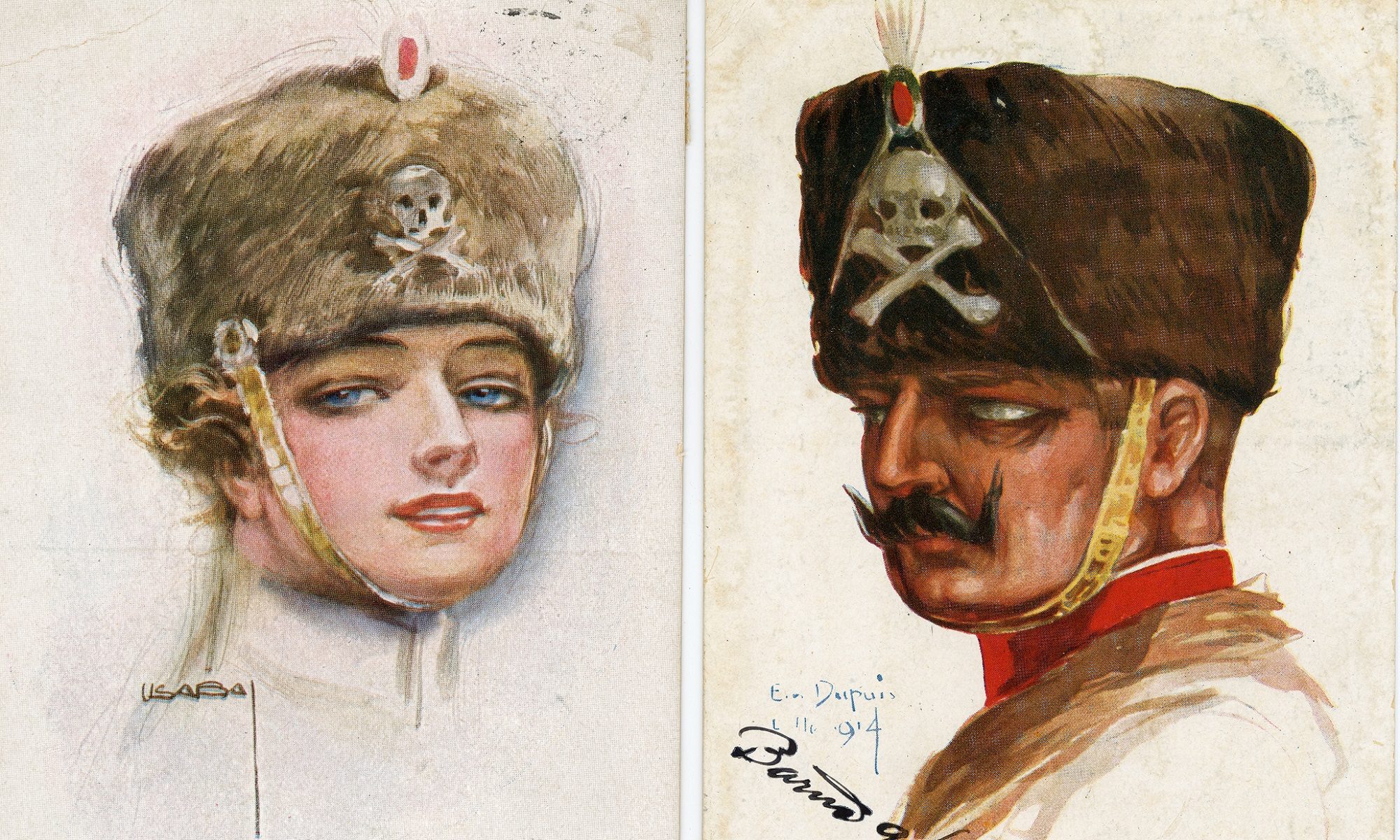Der Totenkopf als Motiv. Eine historisch-kulturanthropologische Analyse zwischen Militär und Moden
Monografie
Band 4 der Reihe mode global herausgegeben von Burcu Dogramaci.
2023, 610 Seiten mit 347 meist farb. Abb.
Böhlau
ISBN 978-3-412-52890-4
Rezension (Review) von Gundula Wolter für das Netzwerk Mode Textil

Inhalt:
Was bedeuten Totenkopfsymbole? Über die Medien- und Konsumkultur zieren sie das Erscheinungsbild von Waren und Menschen. Sie stiften Attitüden, die in den letzten Jahrzehnten verstärkt als attraktiv und cool, aber auch als geschmacklos und bedrohlich bewertet werden. Spätestens wenn machtvolle oder nach Macht strebende Gruppen das Symbol nutzen, stellt sich die Frage, was es signalisiert. Die Studie analysiert aus historisch-kulturanthropologischer Perspektive Totenkopfmotive bei Piraten, Husaren, Freikorps, SS und Halbstarken. Aus dem historischen Militärwesen heraus haben sie multiple Bedeutungen für die Moden in Vergangenheit und Gegenwart entfaltet: Erst wer die Geschichte kennt, vermag die Relevanz der teils stark belasteten Motive einzuschätzen.
Skulls as motifs. A historical and cultural anthropological analysis focusing the interdependency of military and fashion. What do skull symbols mean? They adorn the appearance of goods and people in media and consumer culture. In recent decades they have increasingly been perceived as attractive and cool, but also as tasteless and threatening. Especially when powerful groups or those striving for authority use the symbol, its meaning is questioned. The study analyses skull and crossbones motifs in pirates, hussars, Freikorps, SS, and Halbstarke from a historical-cultural anthropological perspective. Emerging from the historic military, skull symbols have unfolded multiple significances for fashions in the past and the present: It takes knowledge of history to assess the relevance of these symbols, which are often highly charged.
☠ ☠ ☠
Punk, Rock, Mode. Subkulturelle Totenkopfmotive und militärhistorische Verflechtungen
Ralf von Appen, Peter Klose (Hrsg.)
Die materielle Kultur populärer Musik
2023, 258 Seiten
Transcript
ISBN 978-3-8376-7010-3
Inhalt:
Der Beitrag konzentriert sich auf die Bedeutung von Totenkopfsymbolen in der Massenmode und in subkulturellen Kontexten wie dem Punkrock. Er führt ihre Bedeutung eher auf militärische Uniformen als auf Piraten, Religion oder Subkulturen zurück. Um die Bedeutung von Totenkopfmotiven zu verstehen, ist es wichtig über die Geschichte jener Subkulturen hinauszublicken, die oft als Urheber angesehen werden. Anhand von Fotografien und subkulturellen aufgeladenen Objekten wird untersucht, wie sich die Punkbewegung mit Totenkopfabzeichen ausstaffierte, die auf das preußische und britische Militär zurückgehen. Die Rückverfolgung der markanten Insignien in historische Kontexte zeigt nicht nur die beharrliche Übernahme, sondern auch wichtige Perpetuierungen und Bedeutungsentwicklungen. Die Punks sind zwar eine der bekanntesten Jugendkulturen, die Totenkopfmotive verwendet haben, aber sie sind damit weder allein noch sind sie die Ersten. Mit dem Aufkommen subkultureller Stile in der Massenmode gelten militärisch inspirierte Abzeichen als populär und modisch. Auf der Grundlage der diachronen Zusammenhänge plädiert der Artikel dafür, Militärkleidung und Mode als eng miteinander verwobene Phänomene zu verstehen.
Punk, Rock, Fashion. Subcultural skull motifs‘ entanglements with historical military. The article focuses on the significance of skull symbols in fashion and subcultural performance such as punk rock. It attributes their relevance to military uniforms rather than pirates, religion or subcultures. When analysing the meaning of skull symbols it is necessary to look beyond the history of subcultures, which are often considered the primary initiators of mass fashion processes. Based on photographs and decisive products of subcultural media, the article examines how punk adorned itself with skull and crossbones insignia that can be attributed to the Prussian and British military. Tracing distinctive insignia back to historical contexts reveals not only the persistent adoption but also important perpetuations and progressions in meaning. Punks are one of the best-known youth cultures to have used skull motifs, but they are neither the only ones nor the first. With the emergence of subcultural styles in mainstream clothing, military-inspired badges are considered popular and fashionable. Based on the diachronic correlation the article aims to show how military dress and fashion are deeply entangled phenomena.
☠ ☠ ☠
Interview im Projekt „Modeblicke“
Im Forschungsprojekt „Modeblicke“ von Catharina Rüß wurde ich zum Verhältnis von Mode, Totenkopfsymbol und Tod befragt.
I was consulted on the relationship between fashion, the skull symbol and death in „Modeblicke“, a project led by Catharina Rüß.
☠ ☠ ☠
Totenköpfchen. Totenkopfsymbol und Kinderkleidung
Melanie Haller, Traute Helmers, Stefanie Mallon (Hrsg.)
Textile Materialitäten im Kontext von Vergänglichkeit
2020, 406 Seiten
Waxmann
ISBN 978-3-8309-4249-8
Inhalt:
Der Beitrag setzt sich mit Fragen danach auseinander, wie Totenkopfsymbole als textile Designs beispielsweise aus der Skateboard-Kultur heraus Relevanz in der Massenmode entfaltet haben. Er zeigt auf, dass Eltern unter Bezugnahme auf subkulturelle Codierungen ihre Kinder mit Totenkopfmotiven einkleiden, weil sie sie als Attribute kindlicher Coolness betrachten.
Cute skulls. Skull symbols and children’s clothing. The article deals with questions about how skull symbols as textile designs, for example from skateboard culture, have developed relevance in popular fashion. With reference to subcultural codings parents dress their children with skull fashion because they tend to interpret those objects as attributes and significer of cool kids.
☠ ☠ ☠



